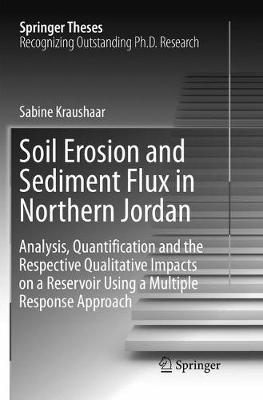Springer Theses
1 total work
This book combines new quantitative erosion measurement methods with a geochemical fingerprint and a model-based approach to measure erosion and sediment flux in the Wadi Al-Arab, a Mediterranean to semi-arid catchment in northwest Jordan. The outcomes reveal the local importance of soil erosion and sediment yield in connection with sedimentation and pollution of surface water bodies, propose managed aquifer recharge strategies that focus on in-channel constructions, and can be used to support local soil management strategies.
In Jordan, one of the most water scarcity-affected countries in the world, erosion and sedimentation negatively impact integrative water resource management projects, such as water reservoirs and groundwater recharge basins. This book combines a multiple-response approach with new qualitative methods, such as olive mound measurements and OSL dating of Roman cistern sediments, to obtain long-term average erosion rates in the Mediterranean to semi-arid Wadi Al-Arab catchment in northwest Jordan. The implementation and enhancement of a geochemical sediment fingerprint of the reservoir sediments helped to provide new insights on sediment connectivity. Lastly, the outcomes were compiled and tested in the SedNet model, which provides a more holistic view of the results at the catchment scale and can effectively complement local management strategies.
In Jordan, one of the most water scarcity-affected countries in the world, erosion and sedimentation negatively impact integrative water resource management projects, such as water reservoirs and groundwater recharge basins. This book combines a multiple-response approach with new qualitative methods, such as olive mound measurements and OSL dating of Roman cistern sediments, to obtain long-term average erosion rates in the Mediterranean to semi-arid Wadi Al-Arab catchment in northwest Jordan. The implementation and enhancement of a geochemical sediment fingerprint of the reservoir sediments helped to provide new insights on sediment connectivity. Lastly, the outcomes were compiled and tested in the SedNet model, which provides a more holistic view of the results at the catchment scale and can effectively complement local management strategies.
